How do Load Cells Work?
 Various load cell types are preferred, relative to the needs of the laboratory or operational environment. When you need to convert force into a measurable electrical output, the load cell or transducer, is the best application. Strain gage load cells are accurate within 0.03 to 0.25%. Used for experimental stress analysis and electrical measurement of resistance to strain, these load cells are used in most industrial applications. When precision mechanical balances are required, and where intrinsic safety and optimal hygiene is essential, pneumatic type load cells are a better fit. In cases where the operation is in a remote location, the most applicable load cell type is still the hydraulic load cell because a power supply is not needed.
Various load cell types are preferred, relative to the needs of the laboratory or operational environment. When you need to convert force into a measurable electrical output, the load cell or transducer, is the best application. Strain gage load cells are accurate within 0.03 to 0.25%. Used for experimental stress analysis and electrical measurement of resistance to strain, these load cells are used in most industrial applications. When precision mechanical balances are required, and where intrinsic safety and optimal hygiene is essential, pneumatic type load cells are a better fit. In cases where the operation is in a remote location, the most applicable load cell type is still the hydraulic load cell because a power supply is not needed.
Load Cells Types
Miniature — Subminiature and miniature compression load cells are designed to perform in high capacity loads with minimum available space. Heavy-duty 50.8 mm (2") diameter compression load cells have a low profile, the small size accommodates test benches, industrial weighing applications and prototype structures. They should include a twist-lock connector and a cable connection. There are miniature load cells in metric configurations, ranging from 0 to 100 and 0 to 50,000 Newton range. Sought after features: stainless steel rugged construction, built-in load button, high-accuracy and a 5-point NIST traceable calibration included.
Strain—Strain load cell sensors are suitable for accurate dynamic and static measurement. Designed with a grid of fine grade wire or foil that is bonded to a carrier matrix backing, proportional variance of electrical resistance is in linear variance with grid strain. The strain is found by measuring change in resistance when force is applied to the carrier matrix, which is bonded to the surface. The carrier matrix and adhesive bond work together to transmit strain or change in resistance to the grid. Adhesive and carrier matrix also dissipate heat and insulate against electrical noise, which can act as interference and alter readings. The Wheatstone Bridge Circuit Theory is widely used in static strain measurement for its outstanding sensitivity.
Beam—Low-capacity bending-beam load cells made of aluminum alloy have a capacity range from 1 to 500 kg. Used for OEM force measurement and weighing applications, industrial benefits include cost efficiency. Single point load cells are also aluminum alloy with 1 to 500 kg capacity ranges. Heavy-duty shear beam load cells are manufactured in corrosion resistant, nickel-plated, carbon-steel alloy. Shear beam and double beam load cells are also used in multiple cell applications like tank weighing and industrial process control. Cantilever or bending beam load cells are used for static weight, dynamic weighing, as well as force measuring operations.
Platform—These hermetically sealed load cells are best for applications requiring water tightness and high accuracy, such as industrial food processing, weighing, and automatic weighing stations. Resistive load cells built with bonded foil strain gages can be accurate to ±0.02% of full scale, they offer off-center load compensation which is useful for building scales that are accurate, even when objects to be measured are placed anywhere on a loading platform. S-Type—S-beam load cell types receive compression output readings. They are designed to provide best performance in compact and versatile units, suspended loads, tank weighing, and hoppers.
Canister Style—This type of load cell is used for single and multi-weighing applications, also hermetically sealed and water resistant. The heavy-duty design canister load cell sensors are environmentally sealed to accommodate harsh environments, and are best for axial compression applications. Hydrostatically Compensated—Used for submerged operations like marine weighing, underwater platforms, in pit flooding environments, and on dry docks. All stainless steel construction is very reliable in harsh underwater conditions.
Tension/Compression—Tension/compression load cells are versatile with low profile and welded stainless steel design. They are highly accurate in monitoring compression and tension forces. Industrial load cell types with threaded load connections are constructed to measure tension or compression forces in harsh industrial environments. Bi-directional units range from 25 to 10,000 pounds in 2" diameter (FSO Linearity of ±0.15%).
Evaluating Load Cell Selection
- Measurement Duration: Short-term duration with a Tare, or longer measurement durations where Tare is not applicable
- Output Requirements: Digital USB, wireless, digital RS232/RS485, analog mV/V, 0 to 5V, 4 to 20 mA
- Measurement Speeds: 1 Hz, up to 100 Hz, faster than 100 Hz
- Direction of Loading: Tension, compression, combination of both
- Percent Accuracy Requirement: As a percentage of reading, or percentage of full scale output
- Operating Temperature Conditions: Room temperature, outdoor temperature, well-controlled environment, harsh environment with wide range temperature and humidity changes
- Options for Mounting: Fastening sensor to both sides, unfastened mount
- Certifications Requirement: Trade applications: NTEP or OIML certifications, testing or measurement ASTM E-74 or R&D certification
- Operations Cost: Totals depend on small quantities, or bulk volumes
 CLOSE
CLOSE



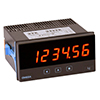
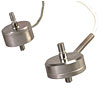


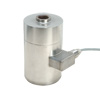
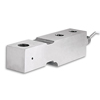
 In the airline industry weight is money. Every additional pound requires more fuel to lift...
In the airline industry weight is money. Every additional pound requires more fuel to lift...
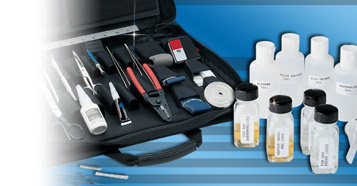 How to use strain gauges and optimize their performance while working with inhomogeneous materials
How to use strain gauges and optimize their performance while working with inhomogeneous materials
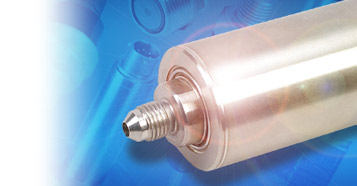 Understand the necessary criteria to select the right type of pressure transducer for your application
Understand the necessary criteria to select the right type of pressure transducer for your application